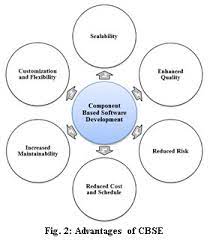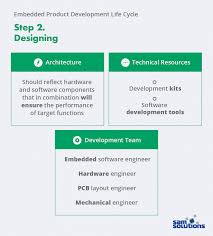Exploring the Power of Component-Based Software Engineering
Component-Based Software Engineering
Component-based software engineering (CBSE) is a software development approach that emphasizes the construction of systems from pre-built software components. These components are independent, reusable modules that can be assembled together to create complex applications.
Key Concepts of CBSE
In CBSE, software systems are decomposed into manageable and reusable components. These components encapsulate certain functionalities and can interact with each other through well-defined interfaces. Some key concepts of CBSE include:
- Reusability: Components are designed to be reusable across multiple projects, saving time and effort in development.
- Interoperability: Components can communicate with each other using standard interfaces, enabling seamless integration within a system.
- Composability: Components can be easily combined or composed to create larger systems without affecting their individual functionalities.
- Maintainability: Changes or updates to a component do not impact other parts of the system, making maintenance easier and more efficient.
Benefits of CBSE
The adoption of CBSE offers several benefits to software development teams and organizations, including:
- Increased Productivity: Reusing existing components reduces development time and costs, leading to faster delivery of software products.
- Better Quality: Components are tested and validated independently, improving overall system reliability and reducing the risk of errors.
- Scalability: Systems built using components can easily scale by adding or replacing components as needed without redesigning the entire system.
- Faster Time-to-Market: By leveraging pre-built components, developers can focus on integrating functionalities rather than building everything from scratch, accelerating product deployment.
Challenges in CBSE
While CBSE offers numerous advantages, it also presents some challenges that developers need to address, such as:
- Component Selection: Choosing the right components that meet project requirements and quality standards can be a complex task.
- Compatibility Issues: Ensuring that different components work together seamlessly without conflicts or dependencies requires careful planning and testing.
- Maintenance Complexity: Managing a large number of components over their lifecycle may introduce complexities in version control and updates.
Understanding Component-Based Software Engineering: Key Concepts, Benefits, and Challenges
- What is component-based software engineering (CBSE)?
- What are the key concepts of CBSE?
- How does reusability play a role in CBSE?
- What are the benefits of adopting CBSE in software development?
- What challenges are associated with implementing CBSE?
- How does interoperability contribute to the success of CBSE?
- Can you provide examples of successful applications built using CBSE principles?
What is component-based software engineering (CBSE)?
Component-Based Software Engineering (CBSE) is an approach to software development that involves building systems from reusable and independent software components. These components encapsulate specific functionalities and can be easily integrated to create complex applications. By promoting reusability, interoperability, and maintainability, CBSE aims to streamline the development process, enhance system reliability, and facilitate the creation of scalable software solutions. In essence, CBSE allows developers to leverage pre-built components to expedite project delivery, improve software quality, and adapt to changing requirements more efficiently.
What are the key concepts of CBSE?
One of the frequently asked questions about Component-Based Software Engineering (CBSE) revolves around its key concepts. In CBSE, the fundamental concepts include reusability, interoperability, composability, and maintainability. These concepts highlight the core principles of building software systems using independent and reusable components that can seamlessly interact with each other through well-defined interfaces. By understanding and implementing these key concepts effectively, developers can create robust and scalable software solutions while streamlining the development process and improving overall system quality.
How does reusability play a role in CBSE?
Reusability plays a crucial role in Component-Based Software Engineering (CBSE) by promoting efficiency and productivity in software development. In CBSE, components are designed to be reusable across multiple projects, allowing developers to leverage existing solutions rather than reinventing the wheel for each new application. This reusability not only saves time and effort but also enhances the quality of software products by incorporating tested and validated components. By fostering a culture of reusability, CBSE enables developers to build systems more rapidly, reduce development costs, and maintain consistency and reliability across different projects.
What are the benefits of adopting CBSE in software development?
Adopting Component-Based Software Engineering (CBSE) in software development offers a multitude of benefits to organizations and development teams. One key advantage is the increased productivity gained from reusing existing components, which significantly reduces development time and costs, leading to faster delivery of software products. Additionally, the use of pre-built components enhances the overall quality of the system as each component is tested and validated independently, resulting in improved reliability and a decreased risk of errors. CBSE also enables scalability by allowing systems to easily expand or adapt by adding or replacing components without requiring a complete redesign. Furthermore, leveraging CBSE accelerates time-to-market as developers can focus on integrating functionalities rather than building everything from scratch, ultimately speeding up product deployment and enhancing competitiveness in the market.
What challenges are associated with implementing CBSE?
Implementing Component-Based Software Engineering (CBSE) comes with various challenges that software development teams need to address. One significant challenge is selecting the right components that align with project requirements and quality standards. Ensuring compatibility among different components to work seamlessly without conflicts or dependencies is another crucial aspect that requires meticulous planning and thorough testing. Additionally, managing a large number of components throughout their lifecycle can introduce complexities in version control and updates, making maintenance a critical consideration in CBSE implementation. Overcoming these challenges through careful assessment, strategic planning, and effective communication among team members can lead to successful CBSE adoption and the realization of its benefits in software development projects.
How does interoperability contribute to the success of CBSE?
Interoperability plays a crucial role in the success of Component-Based Software Engineering (CBSE) by enabling seamless communication and interaction between individual components within a software system. When components are designed to be interoperable, they can effectively exchange data and services through standardized interfaces, allowing for easy integration and collaboration. This interoperability ensures that components from different sources can work together harmoniously, promoting reusability and flexibility in system development. By facilitating smooth interactions between components, interoperability enhances the scalability, maintainability, and overall quality of CBSE applications, ultimately contributing to the efficiency and success of software projects built using a component-based approach.
Can you provide examples of successful applications built using CBSE principles?
Certainly! Many successful applications have been built using Component-Based Software Engineering (CBSE) principles. One notable example is the Microsoft Office suite, which comprises components like Word, Excel, and PowerPoint that can be integrated seamlessly to provide a comprehensive office productivity solution. Another example is the Apache Struts framework, a web application framework that allows developers to build scalable and maintainable web applications by leveraging reusable components. These applications demonstrate the effectiveness of CBSE in creating robust, modular software systems that meet diverse user needs efficiently.







